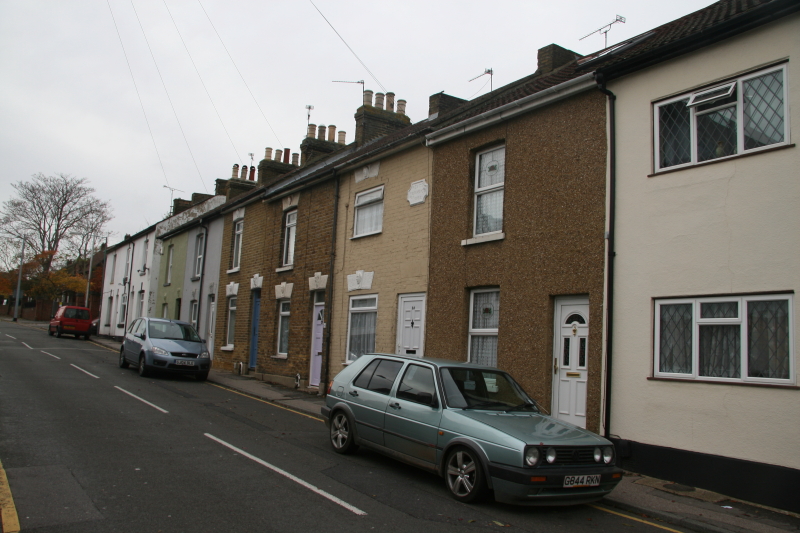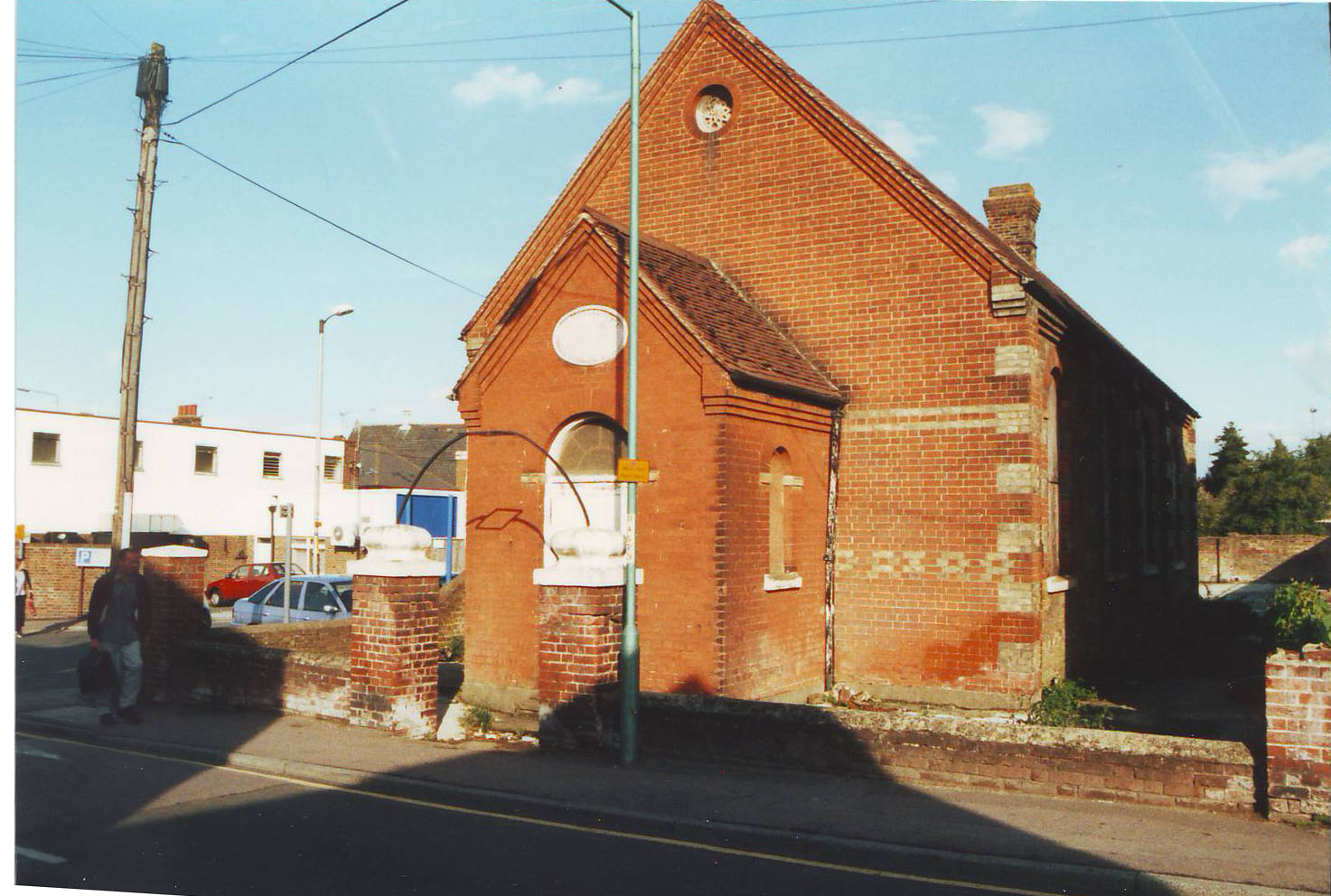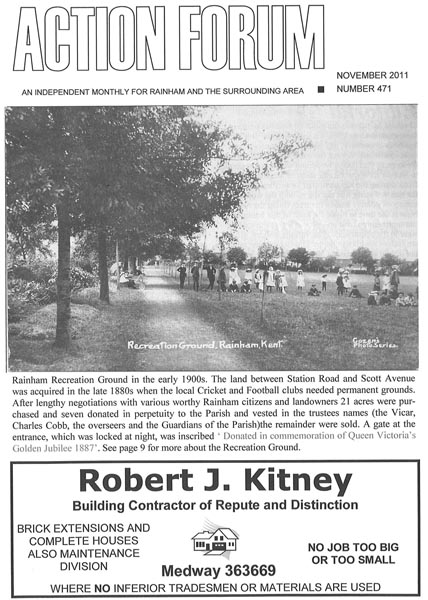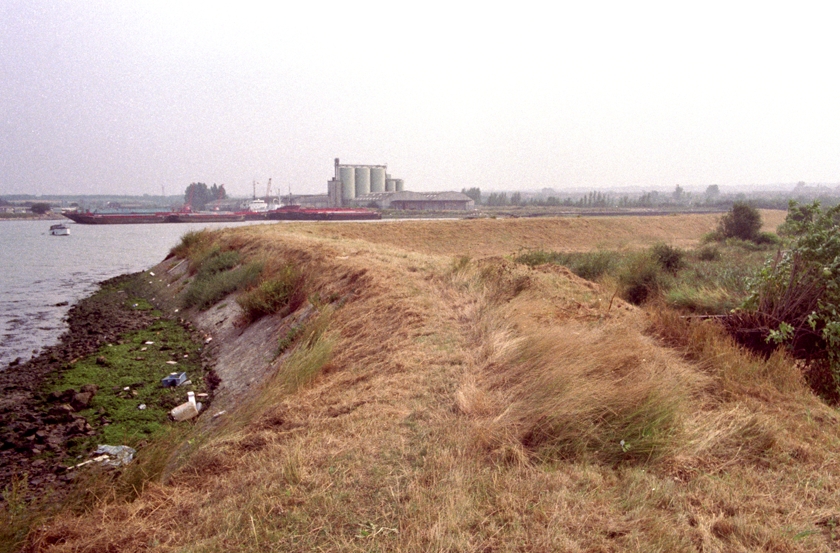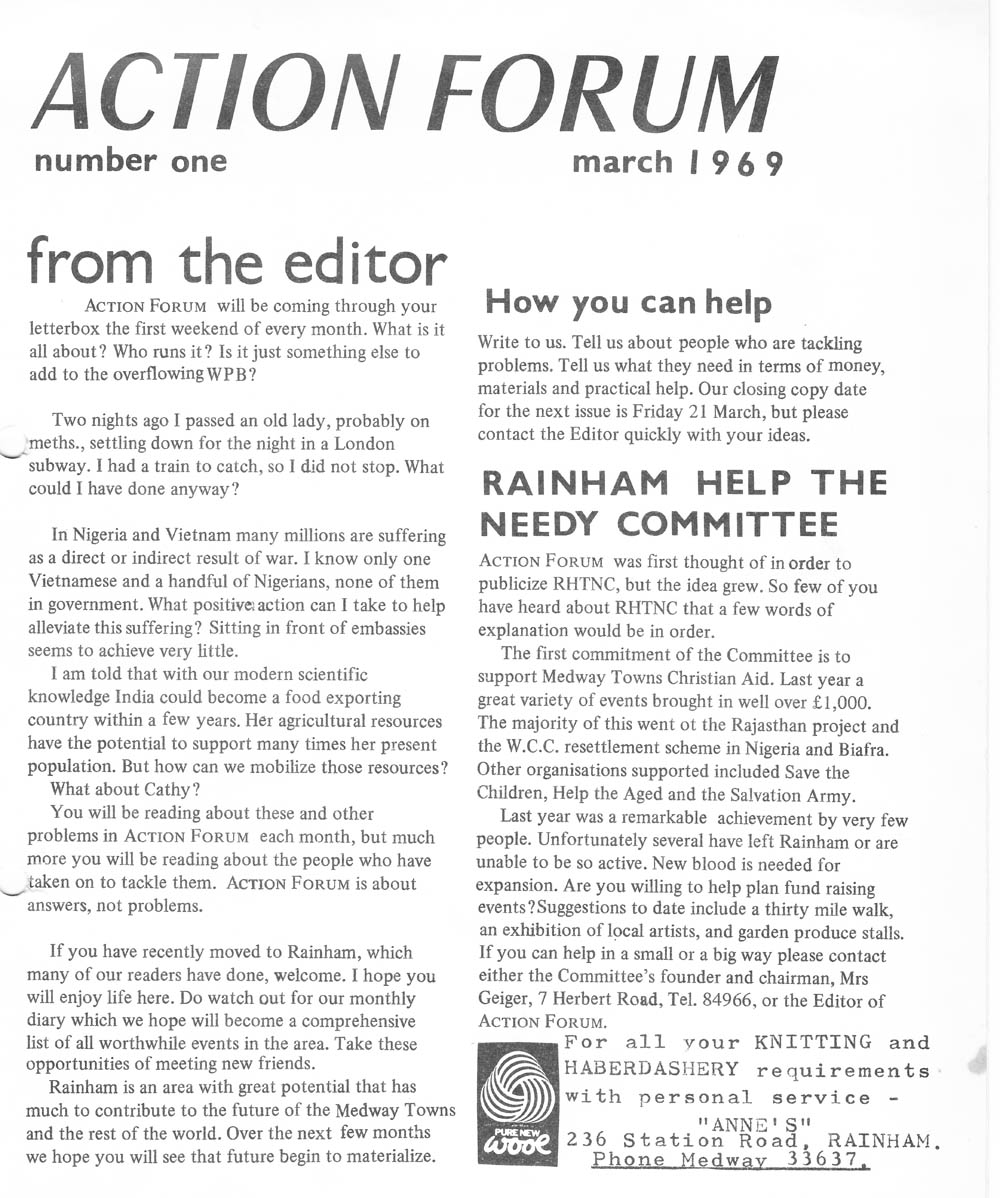A History of Berengrove Park
Originally Berengrove Park had been part of the Manor of Queencourt comprising 485 acres of arable, pastureland, picturesque woodland and ponds situated on either side of Berengrave Lane and stretching as far as the present day Rainham railway station. It was part of the possessions of the Crown until Queen Eleanor, widow of Henry 111 gave it to St Katherine's Hospital in 1273.

Over the centuries Berengrove Park was mainly used as a paddock for sheep or cattle grazing until other uses were found. During the second half of the 19th century fetes and the Rainham Flower Show took place there.
A special new cricket match involving Rainham Cricket Club was arranged to coincide with the Rainham Flower Show and this became an annual match for the club, designed as a sideshow for the crowds. This became known as the ‘Rainham Flower Show Match.’ The first of these matches was played at Berengrove Park against Newington in 1889 and proved to be successful. The club originally hoped to arrange a match against the Philadelphians, a well-known touring side from America but it fell through. The ‘East Kent Gazette’ set the scene perfectly in the summer of 1889:
The fourth annual show of fruit, flowers and vegetables, in connection with the Rainham and District Horticultural, Poultry and Rabbit Society took place on Wednesday at Berengrove, Rainham, the pleasantly situated grounds of this residence having been kindly placed at the disposal of the committee by the Rev J.A. and the Misses Walter. The weather, an all-important factor in open-air gatherings at this season of the year, was magnificent, and made ample amends for the heavy downpour of rain with which the show of 1888 will always be associated. An additional attraction had been arranged this year by way of a cricket match, and something special was announced to be in store for lovers of the great national game of cricket. It was rumoured, in fact, that the Philadelphians might make their appearance at Berengrave, and challenge the redoubtable champions of Rainham to mortal combat, with weapons of willow and leather; but the visitors were spared the painful infliction of witnessing such a sanguinary encounter as a match of that description must produce, and instead of the Philadelphians we had the champions of Newington doing battle on behalf of their village, and after an interesting match the home team came off victorious. The game was witnessed by many spectators, who could recline at their ease on the green award, and sheltered from the sun by the shade of those fine old trees at Berengrave watch the cricket, and also enjoy the music so excellently discoursed by the band of the Metropolitan Police from Chatham, while away in the distance a view of the winding Medway formed a picture pleasing to contemplate
Rainham Cricket Club played occasional matches at the ground as early as 1883 with permission from the owner Reverend J. A. Walter. They went on to use it as a permanent venue from 1923 with permission from owner Lt. Colonel H. E. Day who resided in Berengrove House adjacent to the ground.
Lt. Colonel Day of the Royal Engineers had bought Berengrove along with Berengrove House in 1921 for £3,330 from the Walter family who had owned it for many years. Berengrove consisted of 18 acres with a house, outbuildings, a garden, an orchard, and a park. The house, which adjoined the park, later became a nursing home but during the 1920s Elizabeth, the Queen Mother regularly stayed there for an annual holiday as a guest of Lt Colonel Day.
The cricket club rented the ground from Lt Colonel Day for £15 a year but by letting it out to Mr Longley, a local farmer for grazing at a cost of £25 they were able to cover their costs and make a profit. However, hurdle gates had to be placed around the cricket square to protect it from the livestock that grazed on the outfield. These had to be removed and returned at the beginning and end of each game.
From 1937 Colonel Iremonger owned Berengrove Park, allowed Rainham Cricket Club to continue playing there and held the position of club president. He even had a tree grubbed that was situated next to the cricket square and had an indoor net constructed in the long room of Berengrove House so that the cricketers could practice there during the winter months.
During World War Two the Ministry of Defence took over the ground for food production and the cricket club had to play matches at the Langton Playing Fields until the war ended in 1945.
In 1957 the new owner builder George Ward of Caldew House in Rainham gave Berengrove Park to the people of Rainham as a gift but still allowed Rainham Cricket Club to play there on a lease. Mr.Ward had bought the ground from Colonel Iremonger. The ground was given over to the Charities Commission for the people of Rainham and to be looked after by Gillingham Council with a clause that Rainham Cricket Club should always be allowed to play there.
Rainham Cricket Club who play in the Shepherd-Neame Kent County League continue to use the ground and maintain it at their own expense while various Rainham based organisations use the clubhouse on a regular basis for their meetings.


